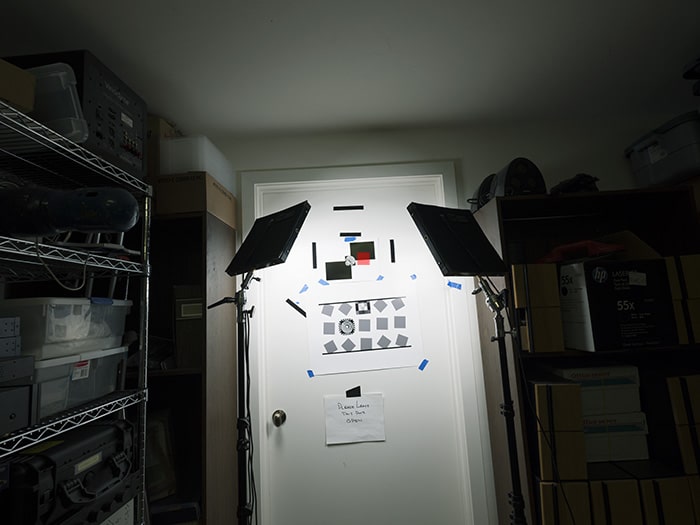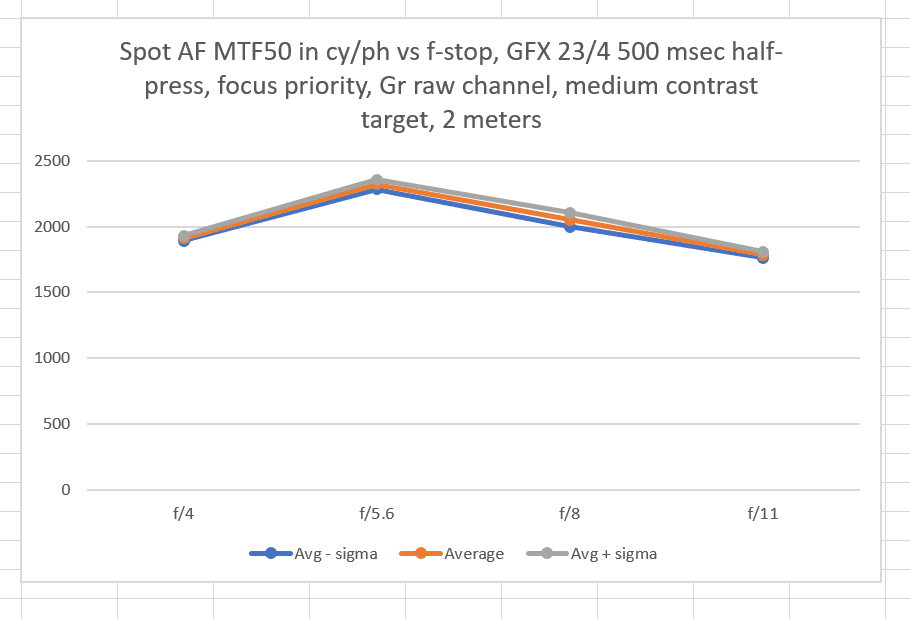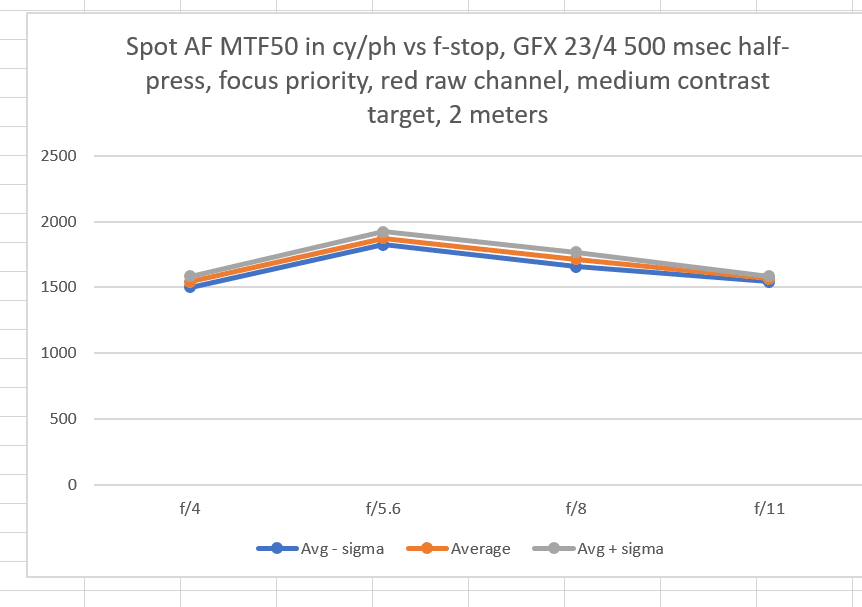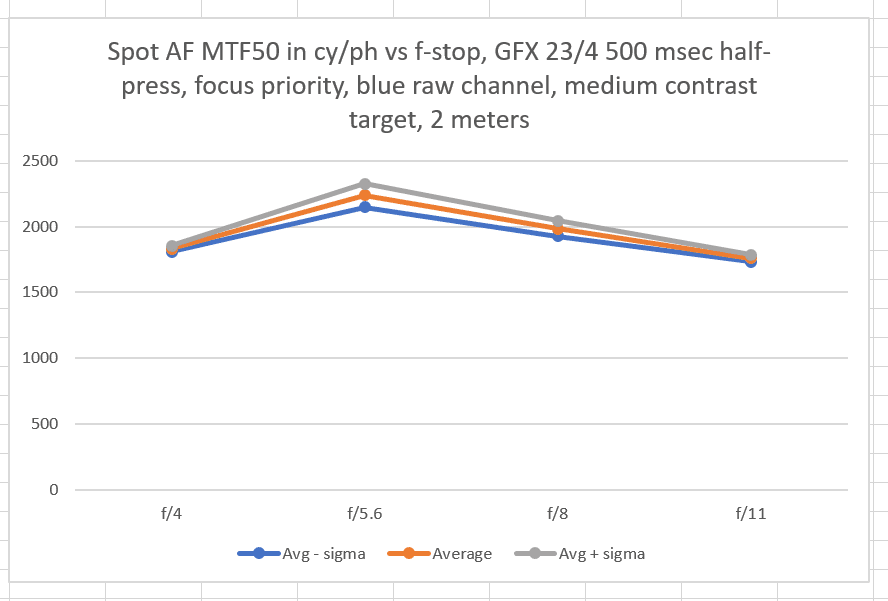This is the 68th in a series of posts on the Fujifilm GFX-50S. The series starts here.
In these tests, I found that the AF consistency and accuracy with a low-contrast target was good, but not great. I decided to resun the tests with a higher-contrast inkjet-printed target. The specifics:
- ISO 100
- AF-S
- Higer contrast target, but still inkjet printed, so not as sharp as the physical razor blade
- Spot only tested — see below for explanation
- Spot set on the ROI, which included all of the zone plate.
- Release priority: focus
- Pre-trigger: 500 milliseconds, which was long enough for focus confirmation green square to flash and confirmation beep to sound in all cases
- Manual exposure
- Wescott LED panels set to 5500 K.
- Electronic shutter
- Cognisys computer-driven focusing rail
- 32 exposures 4 mm apart
- Target distance at the center of the rail, about 2 meters.
- RAF converted to DNG in Adobe DNG Converter
- DNG exported as TIFF mosaiced file in dcraw (document mode)
- TIFFs cropped and raw channels selected in Matlab program
- MTF50 of cropped TIFFs measured with MTF Mapper
- Data assembled in Matlab
- Data plotted in Excel
Here’s the full frame from a sample image, with the ROI marked in red:
The spot mode data for the top green raw channel, Gr:
What you are looking at is a standard measure of sharpness, MTF50, as measured in cycles per picture height (cy/ph) at the whole stops from f/2 through f/11. The orange line is the average, or mean, of the 32 exposures at each aperture. The gray line is that average, plus the standard deviation for the 32 exposures, and the blue line is the average minus that standard deviation. If the data were Gaussian (which it isn’t) two thirds of the values would be between the gray and the blue lines.
Best manual focusing yields about 2400 cy/ph at f/5.6, so this quite good. The spread is much lower than with the low-contrast target and the closer focusing distance.
This is abo9ut 200 cy/ph below the best manual focusing at f/5.6 indicating that the AF system is properly prioritizing the green channel.
The best blue channel data for manual focusing is greater than 2500 cy/ph,. so the AF system is properly prioritizing the green channel.
I wanted to test zone focusing, which was better than spot with the 110/2 and 120/4, but when a switched to zone, the camera focused on the corners of the Wescott LED panels. changing the lighting or camera orientation would have invalidated the comparison, so I gave up.
With a high-contrast target, the GFX focuses the 23/4 very well indeed.




[…] The Last Word – Fuji 23/4 AF performance on GFX — high contrast inkjet target […]